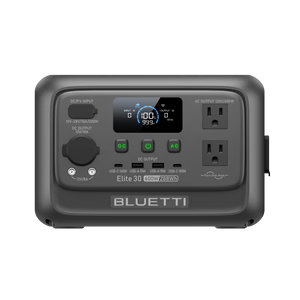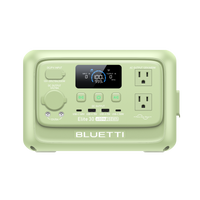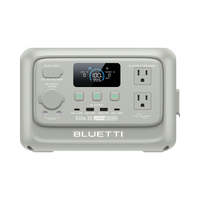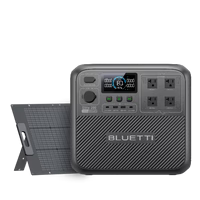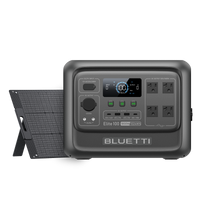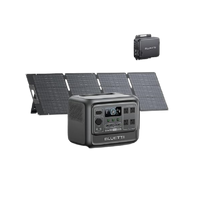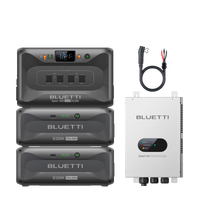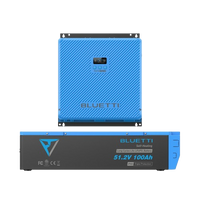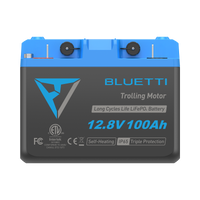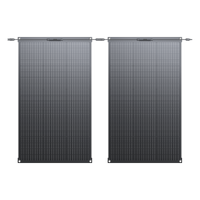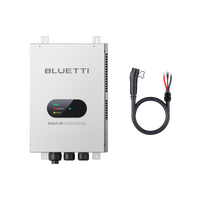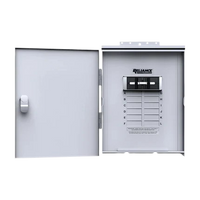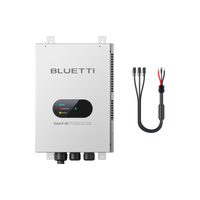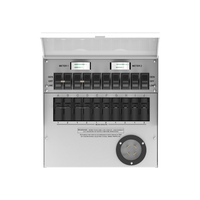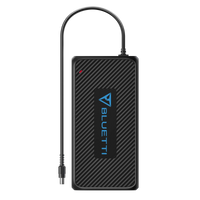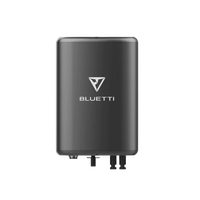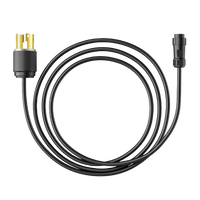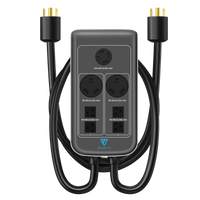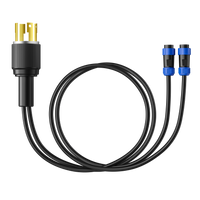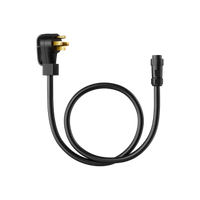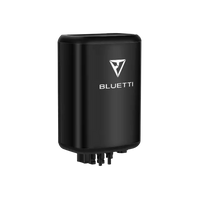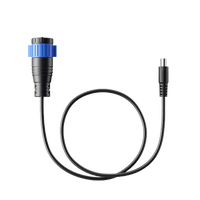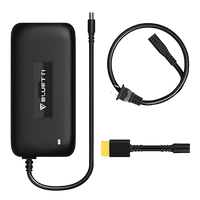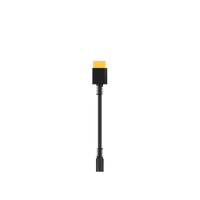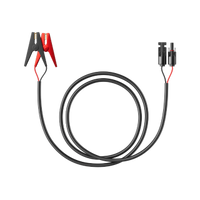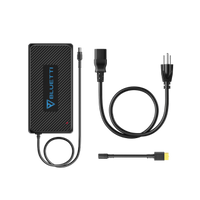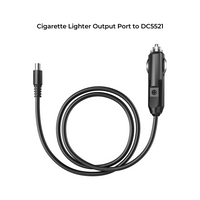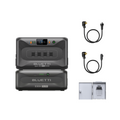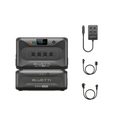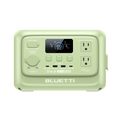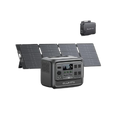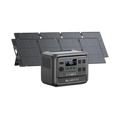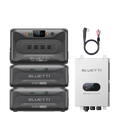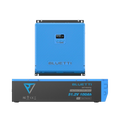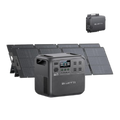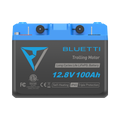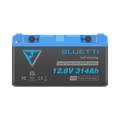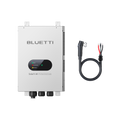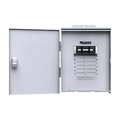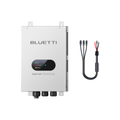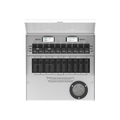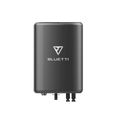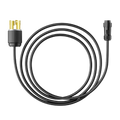Le monde s'engage dans la quête d'une agriculture plus durable, et l'agriculture solaire apparaît comme une solution prometteuse. Elle consiste à utiliser l'énergie solaire pour alimenter les différentes opérations agricoles. Cette approche permet non seulement de réduire notre dépendance aux énergies non renouvelables, mais aussi d'améliorer l'efficacité des processus agricoles.
Alors que nous sommes confrontés au changement climatique et au défi de nourrir une population mondiale, population mondiale croissanteLe secteur agricole est soumis à une pression énorme pour évoluer. Les méthodes agricoles conventionnelles dépendent des énergies fossiles, contribuant ainsi aux émissions de gaz à effet de serre et à d'autres risques environnementaux – un problème qui ne fera que s'aggraver à mesure que nous tenterons d'adapter les exploitations agricoles aux besoins de près de 8 milliards d'êtres humains vivant actuellement sur cette planète.
Ce compromis peut toutefois être évité. De nombreuses exploitations agricoles sont implantées dans des régions bénéficiant d'un ensoleillement abondant, ce qui leur confère une position privilégiée pour exploiter pleinement le potentiel de l'énergie solaire en agriculture. C'est suite à ce constat que l'agriculture solaire a connu un essor considérable ces dernières années.
Des systèmes d'irrigation aux machines agricoles, les agriculteurs peuvent tirer parti de cette ressource renouvelable pour alimenter tous les aspects de leurs activités agricoles. Cette solution est particulièrement intéressante pour les zones reculées ou rurales où l'accès au réseau électrique est limité, peu fiable, voire inexistant.
Les dispositifs solaires portables – panneaux solaires et générateurs notamment – offrent une solution flexible et évolutive. Les agriculteurs peuvent ainsi facilement et à moindre coût étendre leur installation solaire pour répondre à leurs besoins énergétiques croissants.
Comprendre le rôle de l'énergie solaire dans l'agriculture
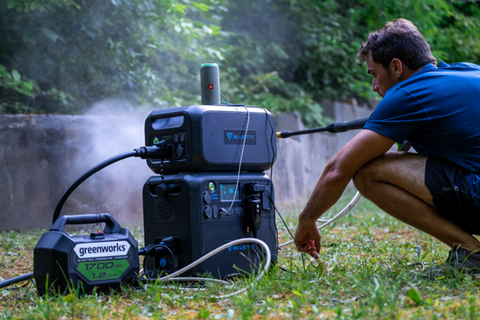
Il est impossible de saisir pleinement l'impact de l'agriculture solaire sans comprendre au préalable les principes de l'énergie solaire et leur application au secteur agricole.
L'énergie solaire est extraite du rayonnement du soleil. Ce rayonnement est capté par les panneaux solaires avant d'être converti en électricité. Il s'agit d'une solution abondante et économique pour répondre aux besoins énergétiques de diverses exploitations agricoles.
L'énergie solaire pour les pratiques agricoles
L'agriculture solaire applique ces principes en utilisant l'énergie solaire pour alimenter diverses pratiques agricoles. Ces pratiques comprennent, entre autres, l'alimentation des machines, le chauffage ou la climatisation des bâtiments et la production d'électricité pour l'éclairage.
L'une des utilisations les plus courantes et efficaces de l'énergie solaire en agriculture concerne les systèmes d'irrigation. Des pompes solaires peuvent puiser l'eau dans les champs voisins et la distribuer sur les parcelles cultivées. Cela permettra non seulement de répondre aux besoins en eau des cultures, mais aussi de minimiser le gaspillage.
L'énergie solaire pour les environnements contrôlés
Une autre application majeure de l'énergie solaire concerne les environnements contrôlés comme les serres. L'énergie solaire permet de maintenir les conditions d'éclairage et de température optimales pour la croissance des cultures, améliorant ainsi l'efficacité de ces environnements tout en réduisant la dépendance aux sources d'énergie conventionnelles, coûteuses et polluantes.
Agriculture solaire dans les régions reculées
Comme mentionné précédemment, l'énergie solaire peut contribuer à exploiter le potentiel agricole des régions isolées, souvent dépourvues d'accès ou n'ayant qu'un accès limité au réseau électrique. Grâce à leur format compact, les panneaux solaires portables et les générateurs peuvent être facilement transportés et installés dans ces zones, assurant ainsi une alimentation électrique fiable même en l'absence de réseau.
Panneaux solaires portables en agriculture
Les panneaux solaires portables jouent un rôle essentiel dans la transition vers une agriculture d'avenir alimentée à l'énergie solaire. Leur facilité de transport et d'installation en a fait un atout majeur pour les agriculteurs modernes.
Les générateurs solaires portables captent la lumière du soleil et la transforment en électricité, une ressource essentielle pour alimenter de nombreuses activités agricoles. Conçus pour être utilisés en extérieur et soumis à des conditions météorologiques variées, ces panneaux sont robustes et résistants aux intempéries. Leur portabilité permet aux agriculteurs d'optimiser l'exposition au soleil en ajustant leur position tout au long de la journée. Cette flexibilité garantit une source d'énergie constante pour les opérations agricoles quotidiennes, quel que soit l'emplacement de l'exploitation.
Utilisations agricoles des panneaux solaires portables
Comme évoqué précédemment, l'utilisation agricole la plus courante des panneaux solaires portables concerne l'alimentation des systèmes d'irrigation. Ces panneaux produisent l'électricité nécessaire au fonctionnement des pompes et, par conséquent, à l'acheminement de l'eau des puits et des réservoirs vers les champs cultivés. Cette solution durable peut s'avérer révolutionnaire, notamment dans les régions bénéficiant d'un fort ensoleillement. Les agriculteurs des régions arides d'Asie et d'Afrique, par exemple, ont adopté l'irrigation solaire avec d'excellents résultats, ce qui a permis d'accroître les rendements agricoles et la sécurité alimentaire.
Mais les applications agricoles des panneaux solaires portables vont bien au-delà de l'irrigation. Ils peuvent servir à éclairer les étables, à alimenter le matériel laitier et à faire fonctionner les batteuses ou les nettoyeurs. Ils peuvent également produire de l'électricité pour les systèmes de sécurité et les clôtures électriques de la ferme, contribuant ainsi à une exploitation plus sûre et plus efficace.
Défis et solutions
Cependant, comme pour toute innovation, l'intégration des panneaux solaires portables n'est pas sans obstacles. Parmi ces obstacles figurent un investissement initial relativement élevé et une forte dépendance à l'ensoleillement.
Cela dit, la baisse des coûts des panneaux solaires portables et les perspectives d'économies à long terme en font un investissement rentable. De plus, les aides gouvernementales peuvent encore accentuer leur attrait. Aux États-Unis, par exemple, le programme REAP (Rural Energy for America Program) est un exemple d'initiative offrant un soutien financier pour les technologies solaires, notamment les panneaux solaires portables.
Le rôle des générateurs solaires portables dans l'agriculture
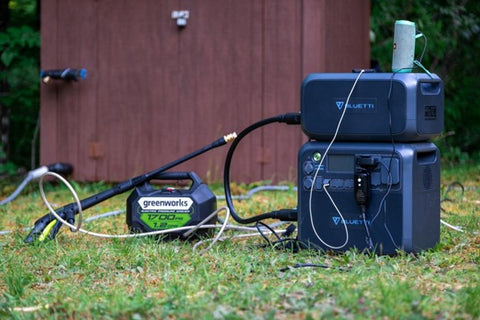
Les générateurs solaires portables constituent le deuxième outil essentiel de l'arsenal de l'agriculture solaire que nous allons aborder.
Ces générateurs sont particulièrement indispensables lorsque l'alimentation électrique continue est essentielle. Ils intègrent des batteries qui leur permettent de stocker l'énergie solaire excédentaire pour une utilisation ultérieure, par exemple la nuit ou par temps couvert, lorsque l'ensoleillement est limité. À l'instar des panneaux solaires, leur portabilité leur confère une grande flexibilité et permet aux agriculteurs de les installer où bon leur semble.
Des pompes à eau aux systèmes d'éclairage, en passant par les machines de récolte et de semis, les générateurs solaires portables peuvent alimenter une vaste gamme d'équipements agricoles. Outre ces équipements, ils peuvent également stocker et fournir une électricité fiable aux bâtiments agricoles tels que les granges, les ateliers et les bureaux.
Similaires aux panneaux solaires portables à bien des égards, ils présentent également des défis similaires. Leur coût initial est considérable et ils dépendent des conditions météorologiques, bien que dans une moindre mesure que les panneaux solaires. Cependant, leur capacité à stocker l'électricité et à fournir une alimentation constante, indépendamment de l'ensoleillement, compense largement ces inconvénients.
Passage à l'échelle supérieure – Étendre l'énergie solaire aux exploitations agricoles de plus grande envergure
Nous avons évoqué précédemment le potentiel de déploiement à grande échelle de l'énergie solaire portable, un potentiel qui jouera un rôle central dans la transition mondiale vers des pratiques agricoles respectueuses de l'environnement. De l'alimentation de machines agricoles lourdes à la conversion de terres non cultivables en espaces agricoles, l'énergie solaire offre de nombreux avantages aux grandes exploitations agricoles.
Alimentation des machines lourdes
Naturellement, les exploitations agricoles de plus grande taille nécessitent l'utilisation de machines plus lourdes, telles que des tracteurs, des cultivateurs et des moissonneuses-batteuses. Jusqu'à récemment, ces machines énergivores fonctionnaient aux combustibles fossiles, contribuant de manière significative non seulement aux émissions de gaz à effet de serre, mais aussi aux coûts d'exploitation.
L'énergie solaire offre une alternative bien plus viable. En alimentant les machines agricoles lourdes grâce à des panneaux solaires et des générateurs portables, les grandes exploitations peuvent réduire considérablement leur empreinte carbone tout en améliorant la rentabilité de leurs opérations.
L'énergie solaire dans les environnements contrôlés à grande échelle
Les environnements contrôlés, tels que les serres et les fermes verticales, sont de plus en plus courants dans les exploitations agricoles à grande échelle. Du contrôle de l'éclairage à la régulation de la température, ces environnements nécessitent une quantité importante et constante d'énergie pour assurer la croissance des plantes.
En intégrant l'énergie solaire, ces installations peuvent maintenir ces conditions optimales et minimiser, voire éliminer, leur dépendance aux sources d'énergie conventionnelles.
Exploiter les terres sous-utilisées pour les fermes solaires
Les grandes exploitations agricoles possèdent souvent des parcelles de terre impropres à l'agriculture. Au lieu de laisser ces portions se dégrader, les agriculteurs peuvent utiliser l'énergie solaire pour les convertir en zones cultivables.
Les installations solaires peuvent fournir suffisamment d'électricité pour alimenter l'ensemble de l'exploitation et, dans certains cas, même en revendre une partie au réseau. Cela permettra non seulement d'agrandir les terres agricoles, mais aussi de créer potentiellement une nouvelle source de revenus pour les agriculteurs.
Au-delà des champs – L’impact plus large de l’agriculture solaire
Les effets transformateurs de l'agriculture solaire ne se limitent pas aux champs. Elle a le potentiel de contribuer au réseau électrique, d'influencer les dynamiques socio-économiques, de remodeler les paysages ruraux et d'atténuer le changement climatique.
Contribuer au réseau
Les installations solaires sur les exploitations agricoles peuvent réinjecter l'énergie excédentaire dans le réseau électrique local, allégeant ainsi sa charge et soutenant les communautés voisines.
Cela offre non seulement aux agriculteurs la possibilité d'augmenter leurs revenus agricoles, mais accroît également le pourcentage d'énergie renouvelable dans le mix énergétique global, catalysant ainsi la transition vers un avenir durable.
Influence sur la dynamique socio-économique
L'impact de l'énergie solaire en agriculture s'étend également aux dynamiques socio-économiques. Par exemple, l'énergie solaire peut favoriser développement dans les zones rurales en fournissant de l'énergie électrique pour des services essentiels comme la santé et l'éducation.
De plus, en réduisant les dépenses énergétiques et en augmentant le potentiel de revenus, l'énergie solaire peut même améliorer le niveau de vie et créer une équité économique.
Renforcer les paysages ruraux
L'énergie solaire peut avoir un impact positif considérable sur les communautés rurales. En réduisant leur dépendance aux sources d'énergie conventionnelles, les agriculteurs peuvent gagner en autonomie et, par conséquent, diminuer leurs coûts d'exploitation et accroître leur rentabilité. Cet impact positif se répercute souvent sur l'ensemble de la communauté, créant des emplois et dynamisant l'économie locale.
De plus, la réduction de la consommation de combustibles fossiles contribue également à une meilleure qualité de l'air et à des conditions de vie plus saines.
Atténuer les changements climatiques
L'agriculture contribue fortement aux émissions de gaz à effet de serre, mais l'agriculture solaire a le potentiel de changer la donne. En réduisant leur dépendance aux énergies fossiles et l'empreinte carbone de leurs exploitations, les agriculteurs peuvent contribuer à lutter contre le changement climatique et le réchauffement planétaire.
De plus, les exploitations agricoles alimentées à l'énergie solaire nécessitent moins d'eau pour des opérations telles que l'irrigation et peuvent ainsi contribuer à la préservation de l'eau – un autre élément essentiel face à la rareté de l'eau et à l'évolution des conditions climatiques.
Exploiter l'énergie solaire – Panneaux solaires et générateurs portables pour l'agriculture
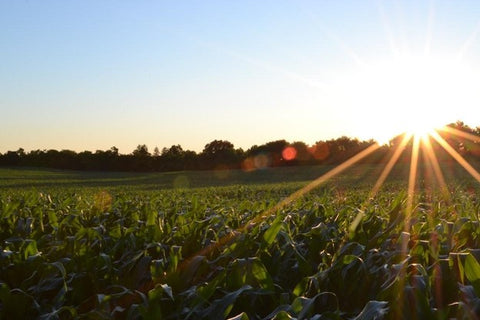
Plus nous explorons les possibilités de l'agriculture solaire, plus ses avantages deviennent évidents. De la petite exploitation agricole aux grandes installations industrielles, l'énergie solaire en agriculture est bien plus qu'une simple source d'énergie d'appoint. Elle représente une voie prometteuse vers des changements significatifs à l'échelle locale et mondiale, notamment une efficacité opérationnelle accrue, un impact environnemental réduit et une multiplication des opportunités économiques.
Ainsi, considérer l'agriculture solaire comme une pratique marginale ou une simple mode passagère serait sous-estimer gravement son potentiel de transformation à long terme, touchant les sphères économique, sociale et environnementale. Alors que de plus en plus d'agriculteurs se tournent vers l'énergie solaire, nous pouvons espérer un avenir où nos pratiques de production alimentaire s'harmoniseront avec la préservation de l'environnement et l'équilibre écologique.
Il n'existe pas beaucoup de moyens qui nous permettent de profiter aussi pleinement des bienfaits du soleil que l'agriculture solaire.






